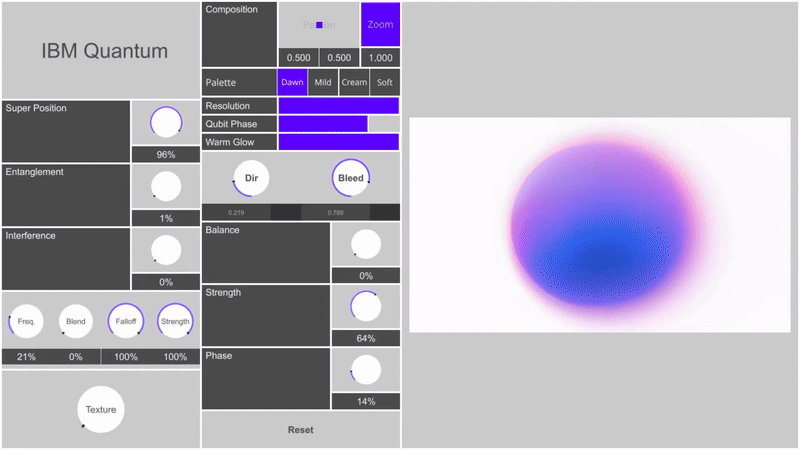This month, our team visited Type Tuesday: Code is Dead (Long Live Code!) by Eye Magazine, where the focus was on digital design, and specifically visual AI, AI tools, and the shifting role of the designer in the age of generative tools. Speakers Jann Choy, Oswin Tickler, and Joel Gethin Lewis each offered a unique perspective on how design is adapting to new technologies.
Jann Choy is a multidisciplinary designer whose practice spans graphic design, 3D motion, and generative systems. Jann shared the process behind IBM’s Quantum Brand Visuals, and how her Field.io team created a generative system rather than a static identity to express the strange logics of quantum mechanics. Every output is unique and each image reflects probabilities, not certainties, just like quantum mechanics itself.
This isn’t the first time Jann has managed to make the incomprehensible comprehensible. She also walked us through her project Liǎn (脸) that draws from Chinese traditions of face reading. Liǎn is an experimental face mask that inflates and deflates in response to digital data. Using a form of machine learning known as ‘sentiment analysis’, the emotional tones of your online behaviour are translated into breath-like motion. So rather than using data to explain, Liǎn enables it to be felt, revealing the invisible rhythms of our digital habits in an intimate way.
The event made us reflect on the systems behind data visualisations, and the designers who are helping shape the next language of seeing.
It also made us ponder some deeper questions:
Can machines co-create meaning?
What happens when designers move from being makers to mediators of systems?
In a world of infinite outputs, how and when do you stop generating? And where does iteration end and authorship begin?
Workshops: UX and data visualisation
We’re running a series of online and in-person workshops from our studio at Makerversity in Somerset House, London. They’re ideal for people working with data who are seeking guidance on how to effectively engage their audience. No prior design expertise is required.
Online talk: How data and design can transform philanthropic decision-making
Last week Simon Worthington and Marco Bernardi – both working at the intersection of data infrastructure and design – explored how funders, grantees, and data practitioners can build the conditions for better decision-making.
Watch the the webinar recording here
This newsletter is brought to you by award-winning design studio Applied Works. Want to submit something to Rows & Columns? Share it with us here




